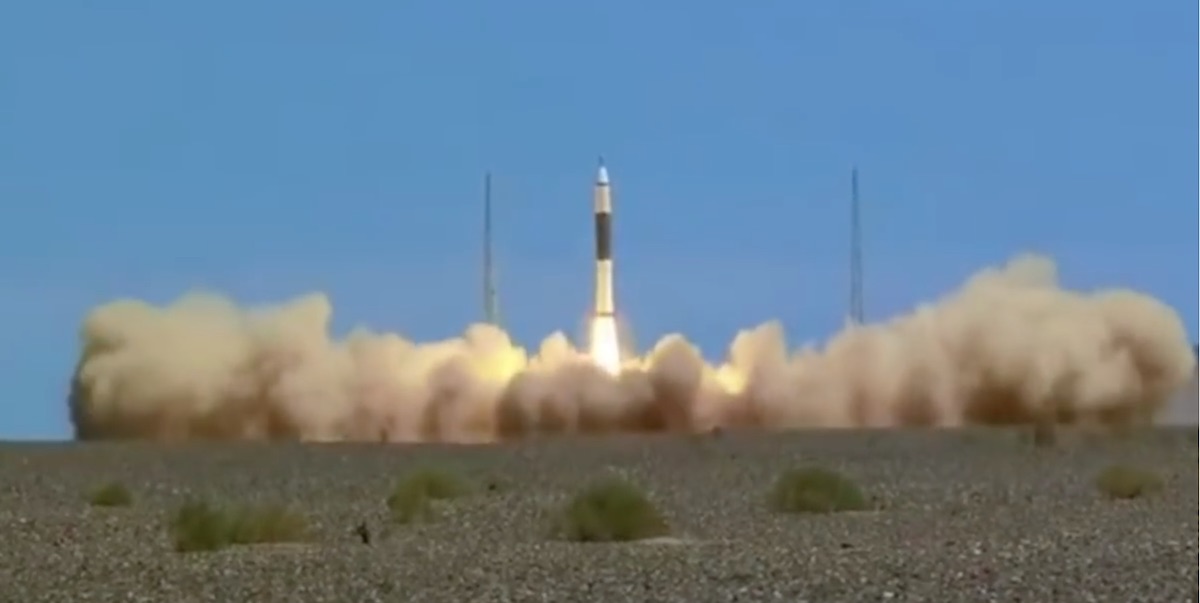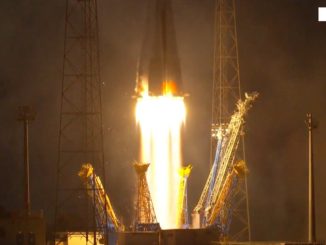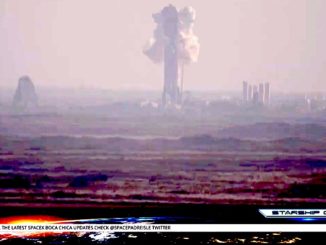
The first flight of the new Chinese Kuaizhou 11 solid-fueled rocket failed to place two small satellites into orbit Friday, and Chinese state media said the cause of the malfunction is under investigation.
The Kuaizhou 11 launcher fired away from a launch site at the Jiuquan space center in the Gobi Desert of northwestern China at 0417 GMT (12:17 a.m. EDT; 12:17 p.m. Beijing time). A video of the launch published after the mission showed the rocket taking off from Jiuquan, and the Kuaizhou 11 appeared to fly normally through the burn of its first stage motor.
Two more solid-fueled stages were expected to fire to place the mission’s two satellite payloads into orbit. Chinese officials did not say at what point in the flight the rocket malfunctioned.
“The specific cause of the failure is under further analysis and investigation,” China’s state-run Xinhua news agency said Friday.
The satellites aboard the Kuaizhou 11 rocket included a Jilin 1 Earth-imaging satellite developed by Chang Guang Satellite Technology Co. Ltd., which has launched launched 16 Jilin 1 observation satellites since 2015. The video observation spacecraft lost on Friday’s launch was developed to provide imagery to Bilibili, a Chinese video sharing website.
Bilibili said last month the satellite weighed around 379 pounds (172 kilograms).
A roughly 220-pound (100-kilogram) satellite named Centispace-1-S2 was the other payload on Friday’s mission. The satellite’s mission was not disclosed, but it follows a previous Centispace spacecraft launched in 2018 for Beijing Future Navigation Technology Co. Ltd. to augment satellite navigation services.
The Kuaizhou 11 rocket was developed by Expace, a subsidiary of the state-owned China Aerospace Science and Industry Corp., or CASIC. Expace is based in Wuhan, China, where the coronavirus pandemic emerged beginning late last year.
The first flight of the Kuaizhou 11 rocket was supposed to occur earlier this year, but the launch was delayed after a lockdown of Wuhan.
Expace also launches the smaller Kuaizhou 1A rocket, which has flown on nine satellite delivery missions since 2017. All of the Kuaizhou 1A flights have been successful.
Expace performed six Kuaizhou 1A missions in a five-month period from late last year through January, including back-to-back Kuaizhou 1A launches on the same day from separate launch pads at China’s Taiyuan spaceport in December.
Kuaizhou means “speedy vessel” in Chinese, a name indicative of its purpose as a satellite launcher that can be readied for liftoff in a short time period. Based on Chinese missile technology, the Kuaizhou launcher family has logged 12 missions in total, including flights of the disused Kuaizhou 1 variant and Friday’s failed Kuaizhou 11 launch.
The Kuaizhou 11 rocket stands 82 feet (25 meters) tall and has a diameter of 7.2 feet (2.2 meters). It has the ability to place a payload of up to 1 metric ton, or about 2,200 pounds, in a polar sun-synchronous orbit 435 miles (700 kilometers) above Earth, according to Expace.
That makes the Kuaizhou 11 China’s most powerful solid-fueled launcher.
Email the author.
Follow Stephen Clark on Twitter: @StephenClark1.



